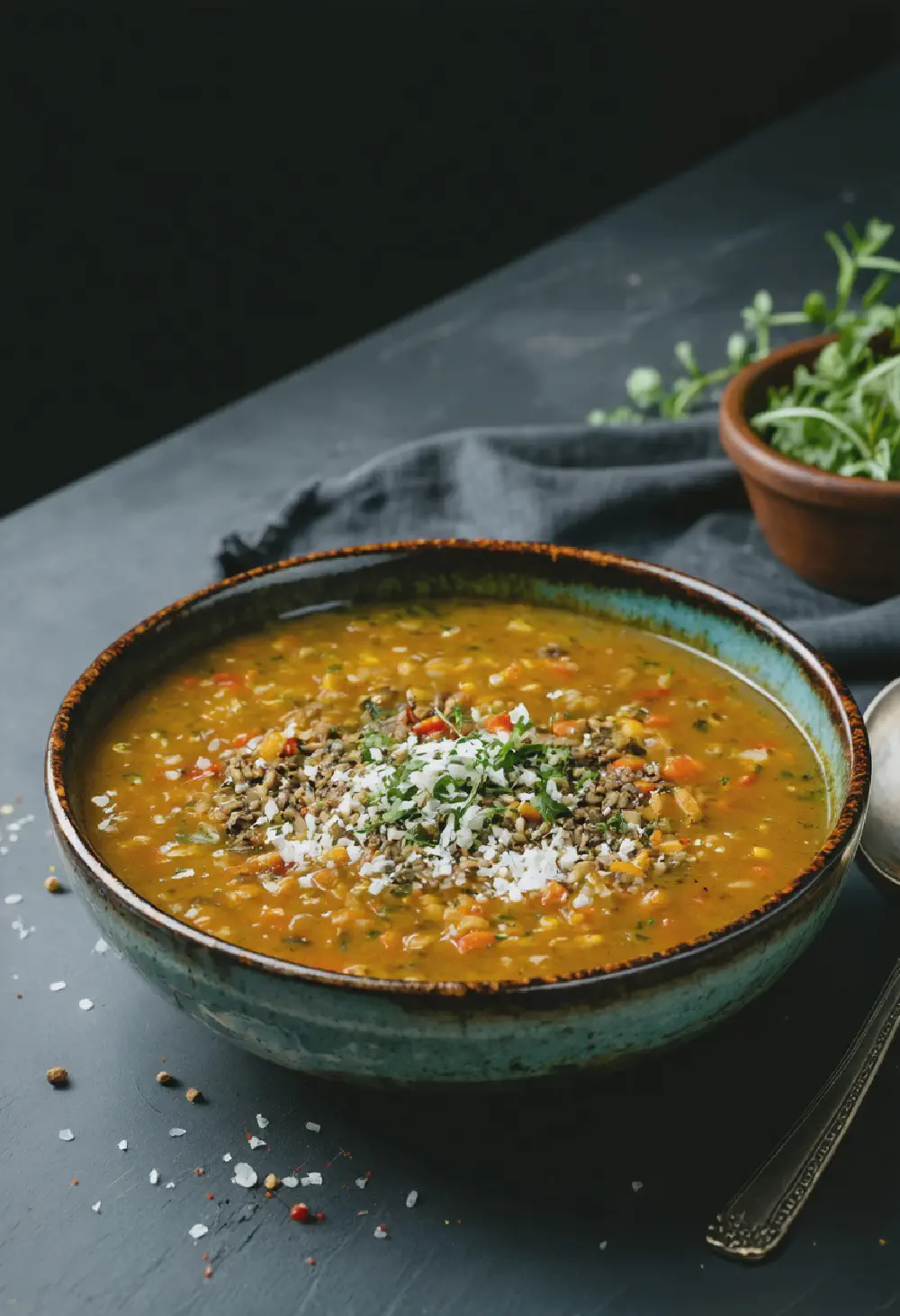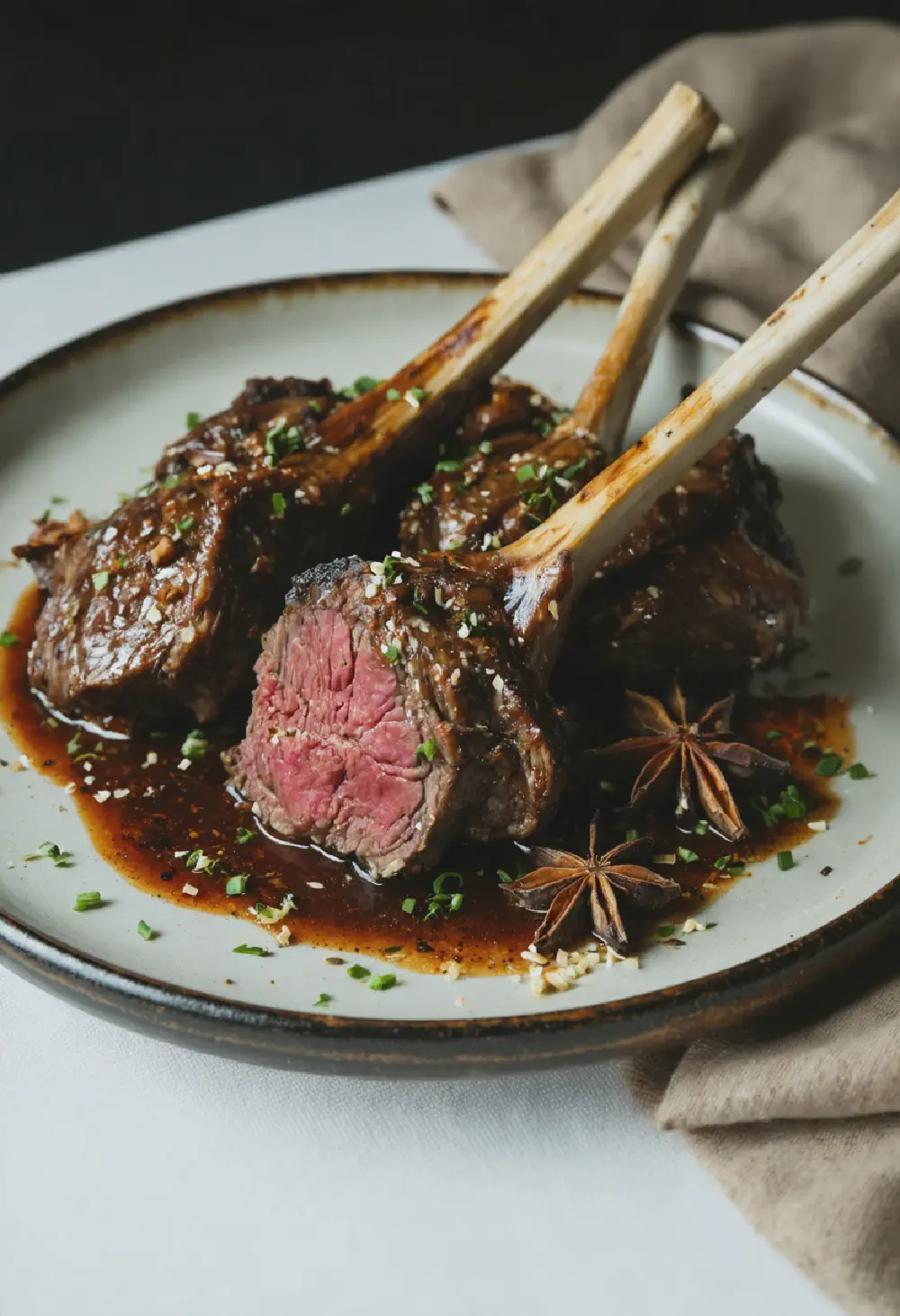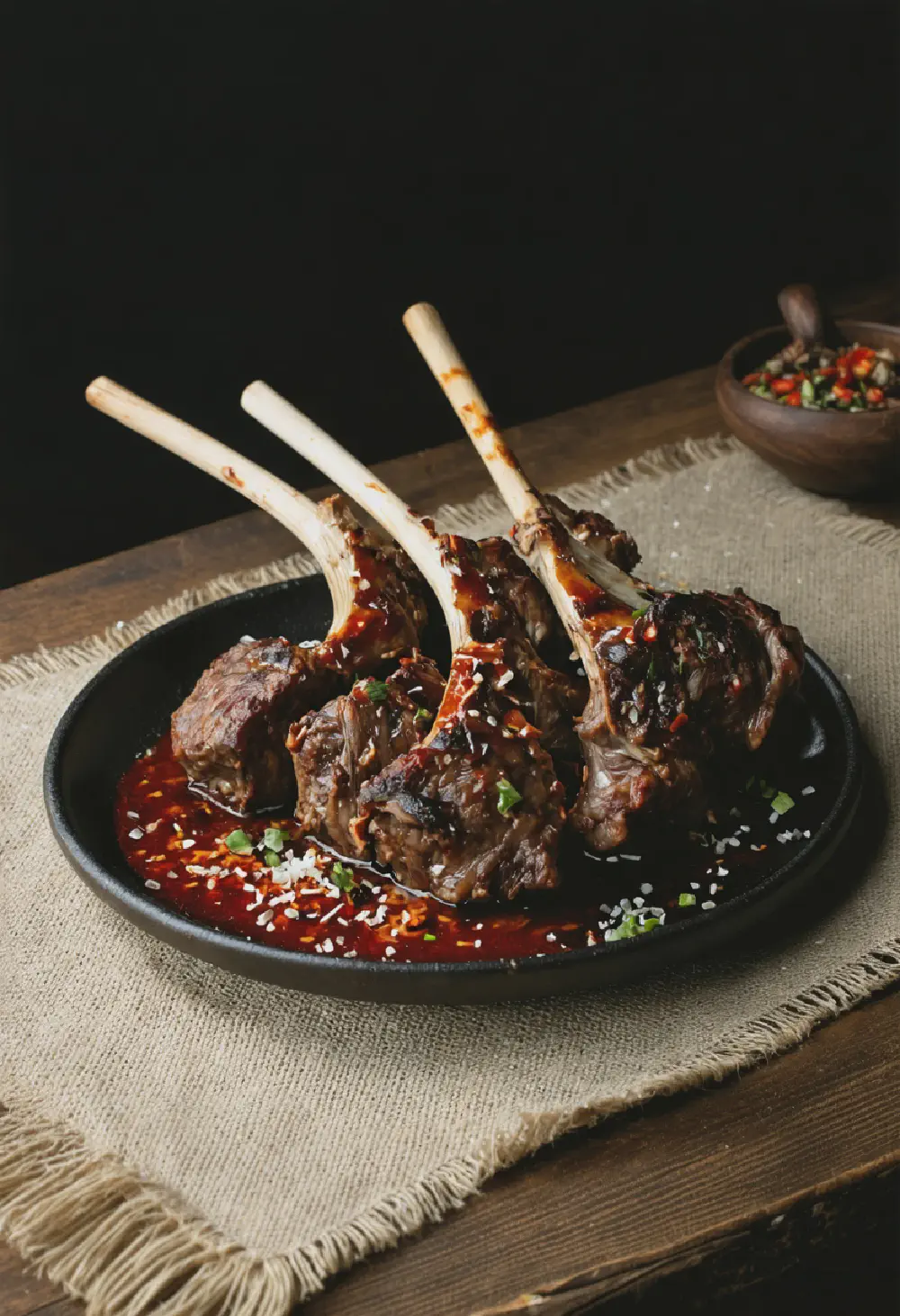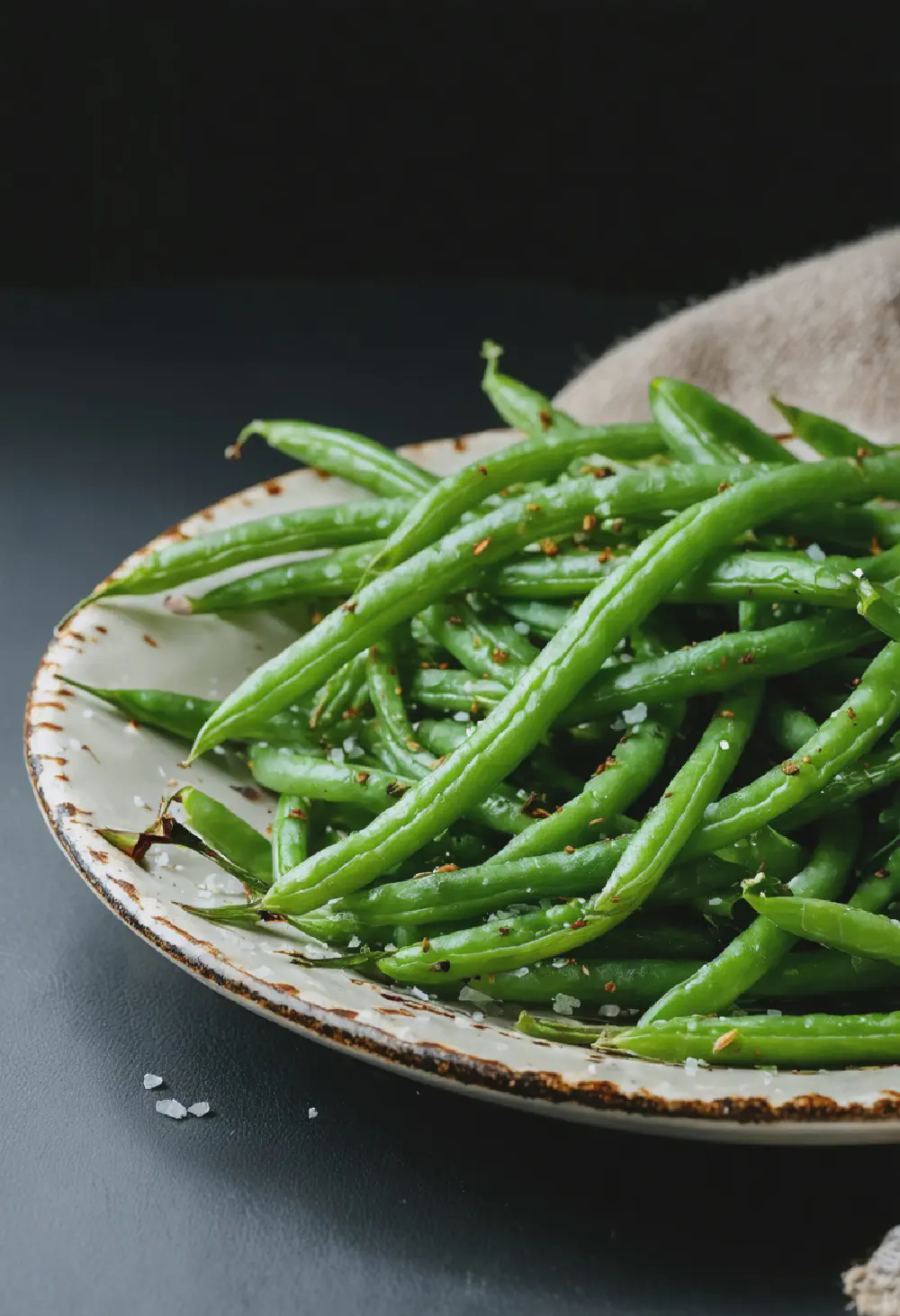Authentic American Split Pea Soup
15M
1H and 45M
- Makes 6
- 2 cups dried split peas, rinsed and sorted
- 8 cups vegetable broth
- 1 large onion, chopped
- 2 carrots, diced
- 2 stalks celery, diced
- 2 cloves garlic, minced
- 1 bay leaf
- 1 teaspoon dried thyme
- Salt and pepper to taste
- 2 tablespoons olive oil
- Optional: 1 cup diced ham for a non-vegetarian version
- In a large pot, heat the olive oil over medium heat. Add the onion, carrots, and celery, and sauté until the vegetables are softened, about 5-7 minutes.
- Add the garlic and cook for another minute until fragrant.
- Stir in the split peas, vegetable broth, bay leaf, and thyme. Bring the soup to a boil.
- Reduce the heat to low, cover, and simmer for about 1 to 1.5 hours, or until the peas are tender and the soup has thickened. Stir occasionally.
- If using ham, add it to the soup in the last 30 minutes of cooking.
- Remove the bay leaf. Season the soup with salt and pepper to taste.
- Serve hot, optionally garnished with croutons or a sprinkle of fresh herbs.
Authentic American Split Pea Soup: A Hearty American Classic
History
The history of Authentic American Split Pea Soup traces back to the early days of American cuisine, where it became a staple due to its simplicity and nourishing qualities. Originating from the need for hearty, filling meals that could be prepared with minimal ingredients, split pea soup gained popularity during the colonial period. It was especially favored by settlers and farmers who needed a warm, comforting dish to combat the harsh winters. Over time, this soup has evolved, incorporating various regional flavors and ingredients, but it remains a beloved comfort food across the United States.
Taste Profile
The taste profile of Authentic American Split Pea Soup is both rich and comforting. The soup boasts a deep, savory flavor derived from the split peas, which provide a thick, creamy texture without the need for cream. Often enhanced with smoky ham or bacon, the soup carries a subtle smokiness that adds depth to its earthy undertones. Aromatic vegetables like onions, carrots, and celery contribute a fresh, yet hearty base, while herbs such as thyme and bay leaves infuse the soup with a warm, comforting aroma. The result is a balanced, satisfying dish that is perfect for chilly days.
Cultural Significance
In the realm of American cuisine, Authentic American Split Pea Soup holds a special place due to its cultural significance. It embodies the essence of American comfort food—simple, hearty, and nourishing. This soup is often associated with family gatherings and holiday meals, particularly around Thanksgiving and Christmas, where it serves as a warming starter to festive feasts. Its presence on diner menus and in home kitchens across the country underscores its role as a unifying dish that brings people together. Moreover, its adaptability to various dietary preferences, including vegetarian and vegan versions, highlights its enduring relevance in modern American culinary culture.
By exploring the history, taste profile, and cultural significance of Authentic American Split Pea Soup, we gain a deeper appreciation for this timeless American classic. Whether enjoyed on a cold winter’s day or as part of a festive meal, this soup continues to warm hearts and nourish souls across the nation.



















